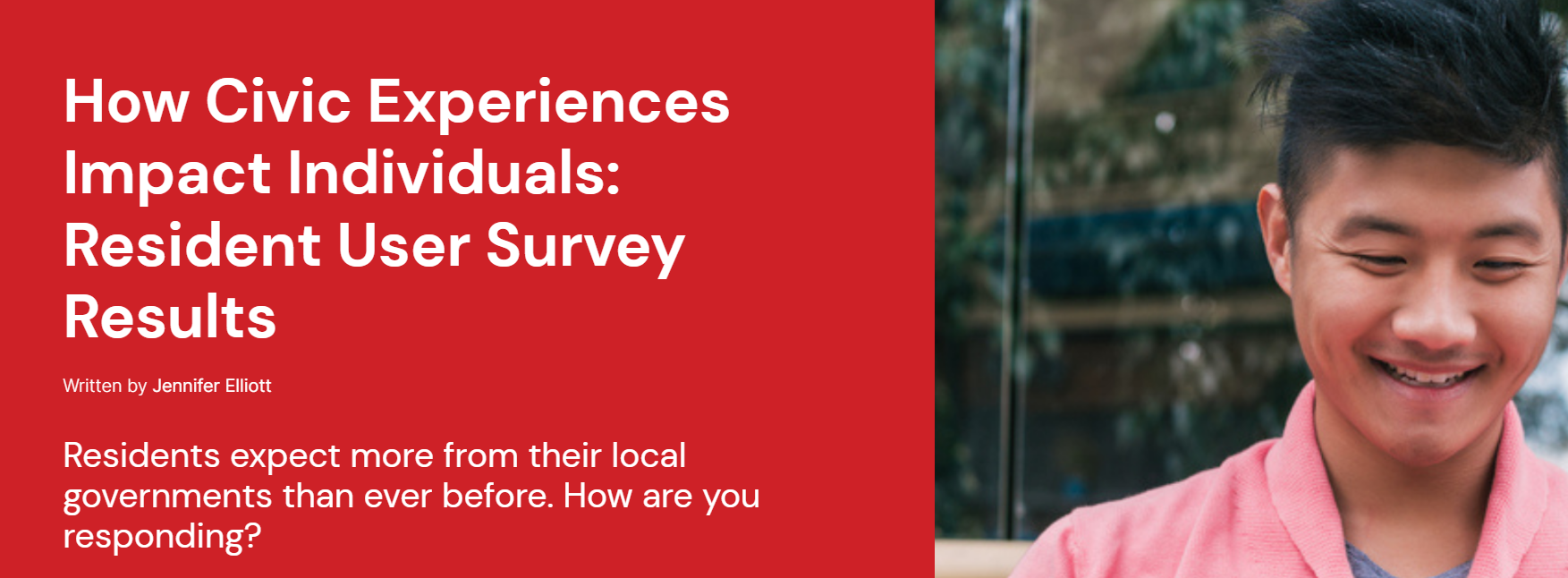
This article was written by Jennifer Elliott, Corporate Marketing Manager for CivicPlus.
Residents expect more from their local governments than ever before. How are you responding?
As we learned from this year’s New Normal Survey results, residents expect more from their local governments, especially regarding technology. With local governments creating, maintaining, and updating essential resident engagement processes to accommodate new expectations related to contactless government, what tools are available to local leaders to achieve digital transformation? To better understand residents’ behavior and perception of local government services, we surveyed over 2,000 residents to gather first-hand insights.
Establishing Our Purpose
A common sentiment shared by local government leaders is that they value their residents and want to improve their experiences within their community. Still, with tight budgets and limited resources, it is almost impossible to take on every initiative that could positively impact continually evolving communities. This reality was made most apparent during the onset of the COVID-19 pandemic when governments had to move many of their in-person services onlin and build novel processes to make these services accessible to their community. Because of the sudden changes to how residents interact with their local governments, we set out to better understand the current resident experience, what typical government interactions look like, and how technology could help municipalities improve the civic experience.
Survey Findings
Local government plays an integral part in the lives of the community it serves. Residents interact with local governments daily, from applying for a permit to signing up for park and recreation activities. When surveyed, residents agreed that they depend on government services, with 68 percent of respondents saying they access local government services monthly but sometimes as often as a weekly or daily basis. However, when asked about interacting with specific service categories including 311, emergency and public safety, health and human services, parks and recreation, and personal (e.g., utilities and billing, permitting, and sanitation), on average, respondents said they access these categories a few times a year or less. While the frequency attributed to accessing specific services categories is less than the overall average, at least 80 percent of the population, regardless of frequency, accesses most of these service categories at some point during the year. In other words, most residents are looking to their government every month to assist them with an assortment of services. While they aren’t accessing these categories as frequently, they still recognize these specific services’ importance within the community.
Further, residents indicate that the quality of accessing local government services is acceptable, both in general and when it comes to relying on those specific service categories as previously mentioned. Eight-two percent of respondents rated the ability to access local government services in general as acceptable, good, or very good. Upon further questioning, residents indicated that the most critical factors that dictate a positive experience when accessing local government services are:
- Being able to find up-to-date and accurate information
- Move through easy and quick processes
- Can receive help quickly when needed
Inversely, residents indicated that the most significant barriers or challenges to accessing local government services are:
- An outdated website or information
- That their previous experience was too difficult or complicated
- Services were not available online
Armed with these insights, local governments can take pride in the services they provide to their residents while recognizing room for improvement.
Trends
Understanding residents as a whole can help local government leaders build and shape processes around services that benefit the entire community. However, to understand a community more in-depth and anticipate the needs of specific groups, it’s helpful to look at segments of the population and what information they’ve provided. Along with powerful statistics about general resident behaviors, survey respondents expressed how different groups interact with local government. Here are a few significant trends from the survey:
- Households with no children in the home access local government services less often than those with children
- The Midwest region of the country— specifically the western half of the Midwest— is accessing service categories less often than other regions
- When asked about the different modes of access for service categories, the most significant gap in service was digital, with a substantial number of services that could not be accessed digitally
- Millennials and Gen Z access local government services most frequently in general and across all service categories
It is important to remember that having information about specific community groups can be informative; local government services need to be accessible to all residents, regardless of age, ability, or mode of access.
Conclusion
No matter the size of the municipality, local government services play a pivotal role in how residents work, play, and live in their communities. While some organizations have struggled with how best to provide services to residents, it has become increasingly apparent that local government leaders are embracing the obstacles their administrations face, adapting to a changing world, and meeting residents where they are to provide positive civic experiences.
